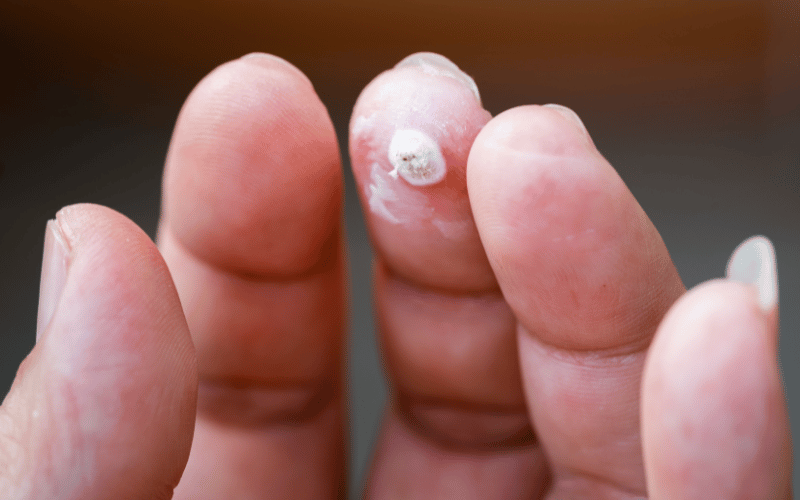Introduction: Unraveling the Mystique of Verruca Vulgaris
When you think of skin conditions, verruca vulgaris might not be the first to come to mind. Yet, this ailment, known to most as the common wart, sparks both intrigue and unease.

Even though it’s widespread, it often remains shrouded in mystery due to its varying symptoms. To decipher this enigma, it’s crucial to grasp its diverse manifestations.
At its core, verruca vulgaris is a testament to the intricate interplay between our skin and external agents. The skin, our largest organ, serves as the frontline defense against a host of environmental aggressors.
From pollutants to pathogens, our skin tirelessly works to protect our internal systems. However, despite its resilience, our skin is not impervious.
Enter the Human Papillomavirus (HPV), the primary culprit behind the common wart. This virus, with its numerous strains, has the ability to breach our skin’s defenses, leading to the formation of these often unsightly and sometimes painful growths.
Furthermore, the realm of verruca vulgaris is not homogenous. The term “common wart” might suggest uniformity, but the reality is more nuanced.
Warts can vary in appearance, texture, and location. A wart on the sole of the foot, known as a plantar wart, might look and feel different from one on the finger.
Some warts remain solitary, while others form clusters. Some are almost imperceptible, while others are more prominent. This variability can lead to confusion, misidentification, and, in some cases, mistreatment.
As we embark on this journey to understand the common wart, remember that knowledge is the first step towards empowerment. By understanding verruca vulgaris, we not only equip ourselves to manage it but also foster empathy towards those affected by it.
In the pages that follow, we will uncover the symptoms of this condition, explore its causes, and offer insights into its management. So, let’s dive in and unravel the intricacies of verruca vulgaris.
1. Rough, Raised Skin Surface – A Closer Look

One of the earliest indicators of a common wart is a discernible change in the skin’s texture. It’s not just a fleeting rough patch. Instead, it signals the arrival of verruca vulgaris.
Warts don’t conform to a standard size. Some might be nearly invisible, akin to a tiny dot. Yet, others can grow, reaching the size of a small coin or even larger. It’s this variability that often causes confusion.
Beyond size, it’s the texture that sets warts apart. They’re not smooth or fleeting like other skin irregularities. Their surface often mirrors that of a cauliflower, both in appearance and feel.(1)